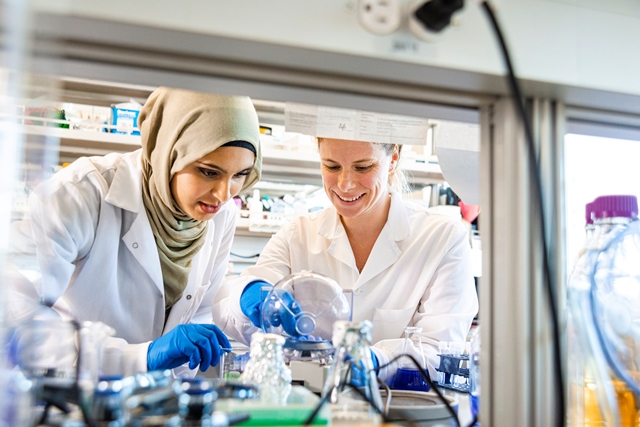The next revolution in personalized medicine
The next revolution in personalized medicine Imagine that, in the months after your child is born, they don’t hit any of the usual developmental milestones, like rolling over or crawling. As time passes, your fears start to mount as your child begins to suffer from more debilitating symptoms, such as seizures and vision loss.
You visit specialist after specialist, only to be told each time that they don’t have an answer. After months—even years—of searching, you are still left in the dark.
Several hundred of our province’s kids and families with unexplained genetic conditions experience journeys like this each year. Individually, these conditions are very uncommon—but with an estimated 8,000 known rare diseases, these conditions collectively affect a large number of children and their families.
“When these kids and families come into our hospital, they are desperate for an answer to the challenges they are facing.”
—Dr. Wyeth Wasserman, executive director, BC Children’s Hospital Research Institute
These families embark on exhausting “diagnostic odysseys”—journeys that involve dozens of specialists who try endlessly to find out what’s going on.
The answers often lie in their genes—and specifically, mutations that occur within them. But with tens of thousands of genes in the human body, pinpointing the precise mutation that’s causing a condition is no small job. And it’s one that can often involve countless tests or painful procedures.
“Every test is an invasion in the life of a child, whether it’s a blood draw, muscle biopsy or spinal tap,” added Dr. Wasserman. “So, you try the most likely problem first—the one that has the best chance of an answer.”
Yet this approach has been unlikely to yield answers. To get a handle on why, it helps to understand how genetic testing technology has evolved throughout the years.
Cracking the Genetic Code
Decades ago, health care providers were essentially in the dark when it came to finding the underlying causes of genetic conditions. But thanks to scientists’ work in mapping out the entire human genome, new technologies emerged that enabled experts to search for the causes.

This was a huge step forward, but the problem with these early tools was that they could only zero in on one gene at a time. It was like trying to find a small object in an immense dark room with the help of just a flashlight. More often than not, the process was unsuccessful.
Diagnostic tools improved, but not quickly enough. Months could still be spent looking at a gene, only to discover that it was the wrong one.
“Families without a diagnosis truly suffer,” explained Dr. Stuart Turvey, Professor and Canada Research Chair in Pediatric Precision Health, who sees many kids with rare genetic conditions. “We don’t know what the future holds for their child. It’s a feeling of being completely lost.”
The Whole Picture
But soon, more families will have a path forward.
With the support of donors, BC Children’s is working to bring the latest revolution in personalized medicine into the hospital: next generation technologies. In one single test, clinicians can peer into the entire genetic makeup of a child and see every gene at once.
This is transformative for a host of reasons. For kids and families, it means less time searching, fewer painful tests and reduced stress. Above all, it means more answers that come faster, which can be profound. Knowing the problem can, in the best cases, inform personalized treatments that are targeted to a child’s DNA—which may even lead to cures.
In cases where there are no proven treatments, a diagnosis can open the door to resources that help families better manage conditions. Many parents also find it life changing to simply have a name for what’s causing their child’s symptoms. It gives them the chance to connect with others around the world who have similar medical problems, alleviating the isolation that comes with a rare genetic condition.
“The clarity of information that comes out of these technologies represents a transition point for these families. They go from the mystery and misery of the odyssey, to understanding and knowledge. There’s hope.”
—Dr. Wyeth Wasserman, executive director, BC Children’s Hospital Research Institute
From Promise to Practice
These technologies won’t be entirely new to BC Children’s Hospital. For the last several years, top minds at the hospital’s on-site research institute have been studying their potential to diagnose complex genetic conditions. Hundreds of children have been given access to them and remarkable success stories have proven their power to change lives.
And now, BC Children’s Hospital is ready to bring these tools out of the research realm and into real-life clinical practice—helping ensure that any child who could benefit from them, will benefit.
When the technologies arrive at BC Children’s, they will transform care for kids and families with unexplained genetic conditions. And that’s just the start. The hospital has bold plans to use next generation technologies to improve care across all areas of child health, from cancer to heart disease.
Lighting a Path Forward
More than 400 guests will come together at this year’s 33rd Annual Crystal Ball Gala to support next generation technologies. This will lead to faster diagnoses and targeted treatments for many, helping end the diagnostic odyssey for hundreds of kids and families across BC.
